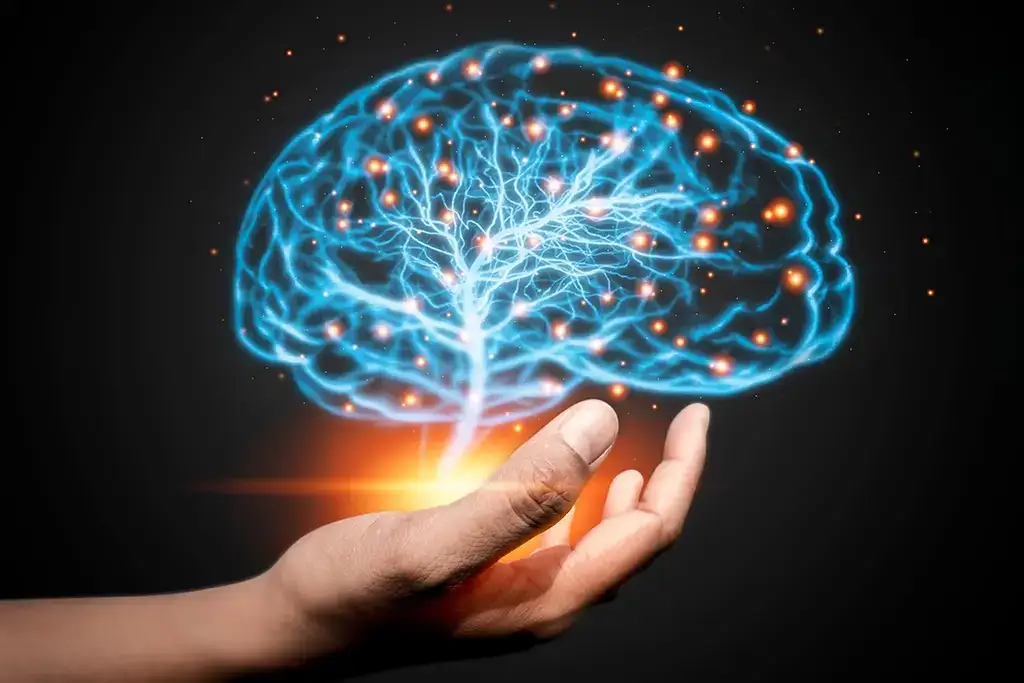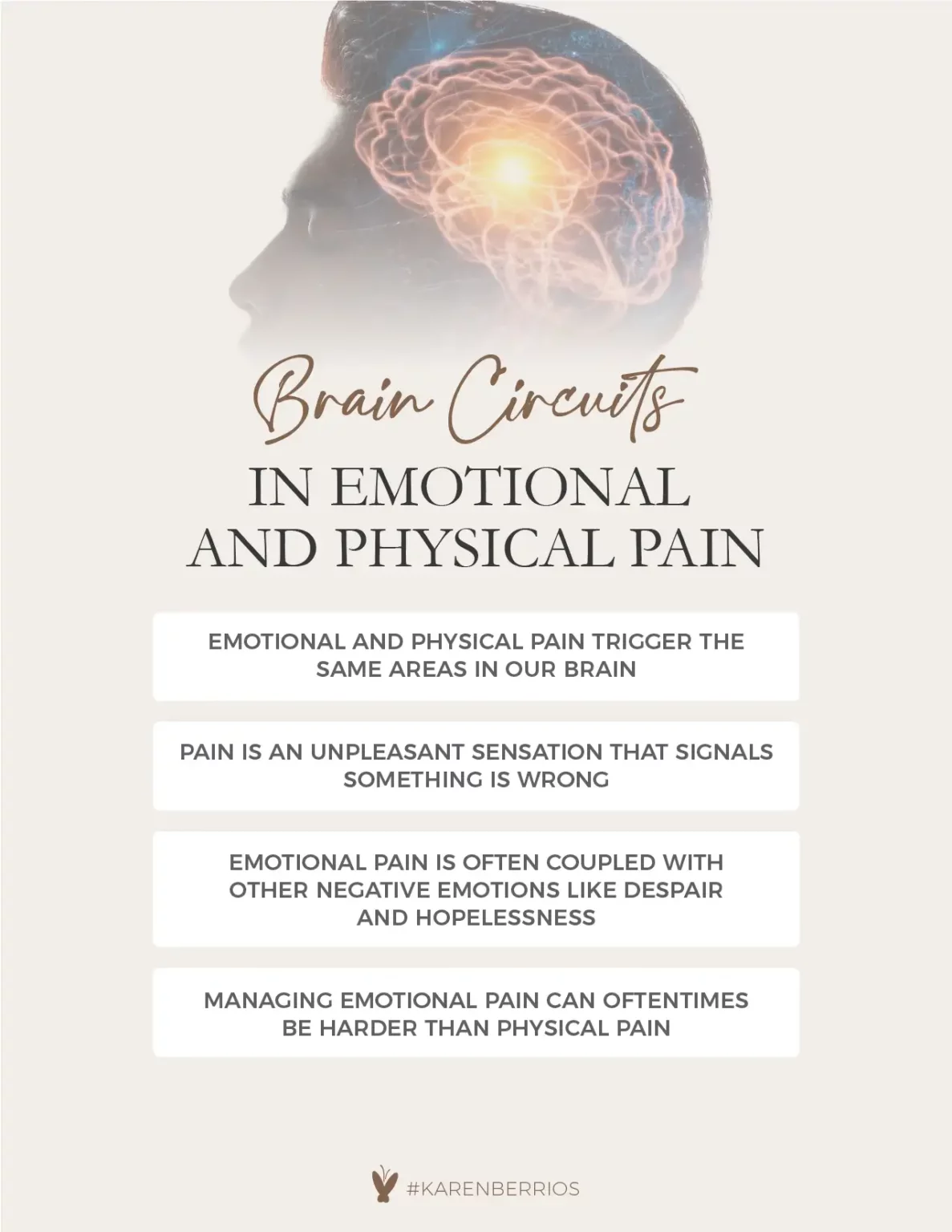

Neural Pathways of Pain: Unveiling the Connection Between Emotions and Physical Sensations
Neural Pathways of Pain. Emotional and physical pain may have their obvious differences, but the way our minds and bodies react to them is more similar than you think. It’s not uncommon to feel a pit in your stomach, chest pain, headaches, and even whole-body aches whenever there’s an emotional stressor, even without any physical cause behind it. And without exaggeration, research proves you really could die of a broken heart.
Science shows a real, neural overlap in how we process both, physical and emotional pain, and how underneath both experiences lies a network of brain regions that support the way physical pain manifests in our bodies. Whether you’re dealing with loss, rejection, or something seemingly banal like a negative comment on Instagram, your brain processes this emotional pain the same as if you had been physically hurt.
What is Pain, Anyway?
Pain is defined as an unpleasant sensation in the body that signals something is wrong. It can be sharp or dull, mild or intensive, burning or stinging. It can also greatly differ from one person to another, depending on a variety of factors that contribute to not only your pain tolerance, but to your own perception of it. While some people may cause a fuss over a finger prick, others may not even notice when it happens to them. The same goes for emotional pain. One person may feel intense pain over a Facebook unfollow while another might not even blink.
In order to feel pain, thousands of nerve cells throughout the body trigger electrical impulses that get received by your brain. The brain processes the information and sends the signals back which your body experiences as painful.
Your Brain and Pain
When you experience pain, the two affected areas in your brain are the anterior insula and the anterior cingulate cortex. These two areas light up the same whether you’ve cut yourself while cooking or you’ve broken up with your significant other. Some will go even further to say that emotional pain may feel worse in some cases, especially if one of the tools used to distract oneself from experiencing emotional hurt often tends to be self-inflicting physical pain. It can also greatly affect your mental health, sometimes to inexplicable extents, causing everything from chronic anxiety to clinical depression.
An interesting study showcased the ability of painkillers to actually help in emotional pain as well. Even though the study wasn’t done to promote any of the farmaceuticals, it showed the incredible way in which our bodies utilize the same neural pathways to deal with both types of pain. The study was conducted on people who experienced a recent social rejection; some were given acetaminophen, while others were given a placebo over the course of three weeks. The results showed how the group that took acetaminophen reported fewer hurt feelings during those three weeks. Even more interesting were their brain scans at the end of the treatment period. The group that took acetaminophen had less activation in the anterior insula and the anterior cingulate cortex.
Building Resilience
If feeling emotional pain can hurt just as bad as physical, does that mean we can learn how to build resilience and how to process the pain we’re experiencing more efficiently? Studies from the University of Michigan show how your brain’s natural painkilling response might be completely different from someone else’s, depending on the level of opioids that get released when faced with social rejection.
Once opioids are released, there are two areas of the brain that determine your experience and reaction. The amygdala helps you process the intensity of the emotion, while the pregenual cingulate cortex helps you determine how you’ll react to it. So, the higher the level of opioids released, the greater the reduction in pain, which also translates into a greater experience of pleasure and happiness when you feel socially validated and acknowledged. This can help you learn how to rewire your brain and lower the impact of emotional pain on your physical and mental health.
Learning How to Cope With Emotional Pain
Physical pain typically gets resolved in a few different ways. Either through healing on its own or through the intervention of medical personnel, but unless it’s chronic, it typically doesn’t come back without a new physical cause (e.a. an injury, sprain, fall, illness). Emotional pain, on the other hand, can easily become overwhelming, consistent, and oftentimes hard to cope with. And when coupled with symptoms of physical pain, dealing with emotional distress may be harder and more complex to overcome.
Sadness and hurt are just two of the emotions linked to emotional pain, but there’s often a plethora of others that can make it harder to cope. These include despair, loneliness, anguish, anger, hopelessness, anxiety, and even panic. They might be hard to even acknowledge on your own, let alone deal with. This is why seeking professional help is always encouraged, especially if the emotional pain you’re experiencing ends up impairing your life quality, makes it challenging to complete your daily tasks, or has a negative impact on your relationships and social interactions.
One of the best tools to help you cope with emotional pain is to focus on what you can control and work on letting go of those aspects that are out of your control. Although it may be easier said than done, worrying and hurting over something you can’t change will never yield a different result. On the other hand, making an action plan for aspects you can change can also help reduce the intensity of the emotional pain, distracting you from its sensation and giving you hope for a resolution.
Additionally, using mindfulness-based practices such as guided meditations, journaling, and even traditional therapy, can be extremely beneficial in dealing with emotional pain. From acceptance and stress reduction to learning how to find something positive in negative situations, these practices can not only help you cope, but also prepare you for a better, and less reactive way of experiencing emotional pain in the future.
Final Thoughts
Emotional pain and physical pain trigger the same regions of the brain, leaving us feeling physically hurt even when there’s no injury or illness that caused it. Furthermore, emotional pain often comes coupled with a complex ball of negative emotions such as despair, anger, and hopelessness.
Managing emotional and physical pain depends on the cause, with some types decreasing on their own time and others requiring professional support. Still, the power of mindfulness cannot be neglected. Something as simple as a guided breathing meditation can drastically lower your stress levels, and with it, the intensity of your emotional pain.

hey there
I'm Karen!
I have found my cancer journey to be a positive and profound transformational experience. I’m inspired to share my healing journey here, and trust you’ll find hope, encouragement and purpose as you discover the healing power that lies within you.
Join
The Mailing List!
By signing up for my newsletter, you agree with our Privacy Policy and Terms & Conditions.



